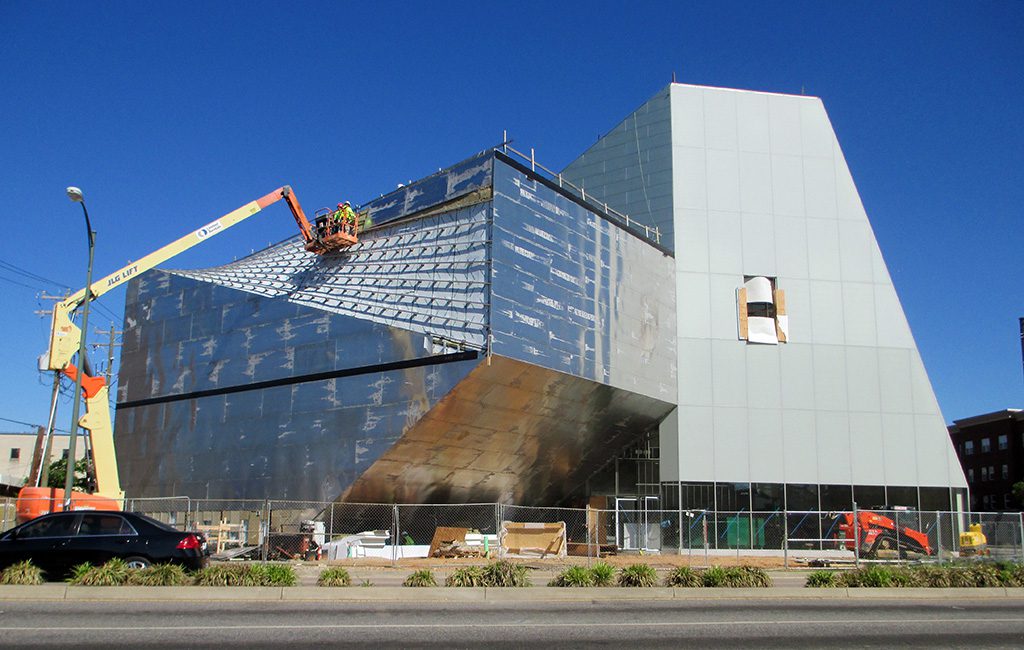VCU’s Institute for Contemporary Art was a $35 million dollar construction project that involved the construction of a 38,000sf building with a double front: one side opens from the city, the other from the sculpture garden to the forum, linking city and campus.
F&R was brought onto the project to provide environmental consulting services during the removal of four underground storage tanks (USTs) and two hydraulic cylinders along with the removal of petroleum impacted soils. Following the removal of the USTs, petroleum saturated soils were removed from the tank pit and were transported to a facility offsite. F&R returned later for the removal of a hydraulic oil cylinder and like the USTs, collected soil samples following removal that were analyzed for total petroleum hydrocarbons (TPH), diesel range organics (DRO), and oil range organics (ORO). During excavation activities concrete vaults that contained trash, metal debris including automobile parts, batteries, paint containers and petroleum contaminated soils were uncovered. After testing and the removal of the USTs, hydraulic cylinder, concrete vaults and weeks of excavation activities, a total of 4,290.21 tons of contaminated soil were removed and disposed of.
F&R also provided a subsurface exploration and geotechnical engineering services in support of the project. The subsurface exploration consisted of seven soil test borings ranging from depths of the 10 feet to 110 feet below the existing ground surface. Once the field activities were concluded typed boring logs and a subsurface profile was prepared. Additionally, F&R performed a geotechnical engineering evaluation of the subsurface conditions with their regard to their suitability for the proposed construction and provided pavement design recommendations. Due to evolving project details, F&R was brought back on to the project to provide an additional subsurface exploration and geotechnical engineering evaluation. The subsurface exploration consisted of three Dilatometer Test (DMT) borings due to the presence of a very dense sand layer beginning at a depth of 45 feet below the ground surface, each hole was predrilled to penetrate the dense sand layer. Once the very dense soils were penetrated, the DMT tests resumed and provided measure parameters that are directly related to the in-situ moduli of elasticity for soils beneath the proposed structure. After the field testing was concluded, F&R provided updated foundation, basement foundation, Gallery 1 foundation recommendations and seismic considerations.



